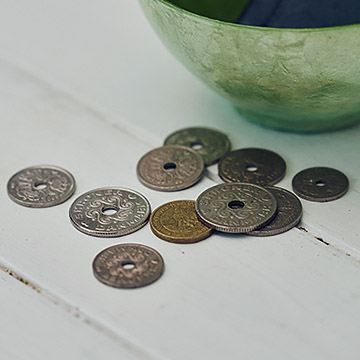Danish taxes consist of direct taxes and indirect taxes. Other common types of tax in Denmark are:
Labour market contributions
All working citizens must pay a labour market contributions. Your employer will deduct this contribution from your monthly pay. Labour market contributions are used for the Government's labour market expenses, for example to cover unemployment benefits, supplementary training courses and maternity leave. Please note that the labour market contribution is actually a tax, deducted from employees’ gross pay, or self-employed persons’ income from self-employment.
ATP contributions
Everyone who works in Denmark must pay contributions to the Danish labour market supplementary pension fund (ATP). The contributions will be deducted from your pay before the calculation of income tax.
As a general rule, you pay 1/3 of the amount yourself, and your employer pays the other 2/3.
Property value tax
If you own a house or an apartment, you must pay property value tax based on the public property assessment. People living in Denmark must also pay property value tax on any foreign property that they own, and people living abroad must pay property value tax on any property that they own in Denmark.
The property value tax is paid via your preliminary income assessment (forskudsopgørelse) and your tax assessment notice (årsopgørelse).
Property tax
You have to pay property tax (land tax), if you own land in Denmark. Land tax is calculated as a percentage of the land value stated in the current public property assessment. It is a local tax, and the rate differs from municipality to municipality.
The property tax (land tax) is paid via your preliminary income assessment (forskudsopgørelse) and your tax assessment notice (årsopgørelse).
Indirect taxes
Indirect taxes are taxes and duties that you pay via the goods and services you buy. Indirect taxes are VAT, customs duties, green taxes and excise duties. You pay indirect taxes to the state every time to buy an article or every time you, for example, open your water tap.
Indirect taxes are included in the price that you pay for the goods/services. The seller is responsible for paying, for example, VAT, customs duties and excise duties to the state.
VAT
In Denmark, VAT is included in the price of nearly all goods. VAT is also levied on services, for example, if you have your bicycle or car repaired, if you visit the hairdresser’s, etc.
Green taxes
Green taxes are taxes that you pay for spending society’s resources. The more resources you spend, the more green taxes you must pay. The idea behind this is to make citizens try to limit their consumption and thus conserve natural resources. For example, green taxes are levied on petrol, oil, electricity, water and waste. This means that the price of these resources increases, which is the intention. If the price of petrol increases, people will drive less, which will limit the impact on the environment. Lower green taxes are imposed on environmentally friendly cars that pollute less and are more fuel-efficient.
Excise duties
Excise duties are levied on the import, manufacture and sale of certain goods. When you purchase an article at a shop, the excise duty has already been paid, so as an ordinary customer you do not have to worry about this. Goods on which excise duty is imposed include wine and beer, batteries, chocolate, sweets and soft drinks. If you buy a car or a motorcycle, you will have to pay an additional registration tax.
Customs duties
A customs duty is a tax which you pay to the state. If you have travelled to a non-EU Member State and purchased goods that you bring back to Denmark, you may have to pay customs duties. This depends on the total value of the goods that you have purchased. A special set of rules applies to spirits and tobacco for which you must pay customs duties if you purchase a certain volume. You must declare what goods you have bought and pay customs duties upon arrival in Denmark (for example, at the airport or the border crossing).
